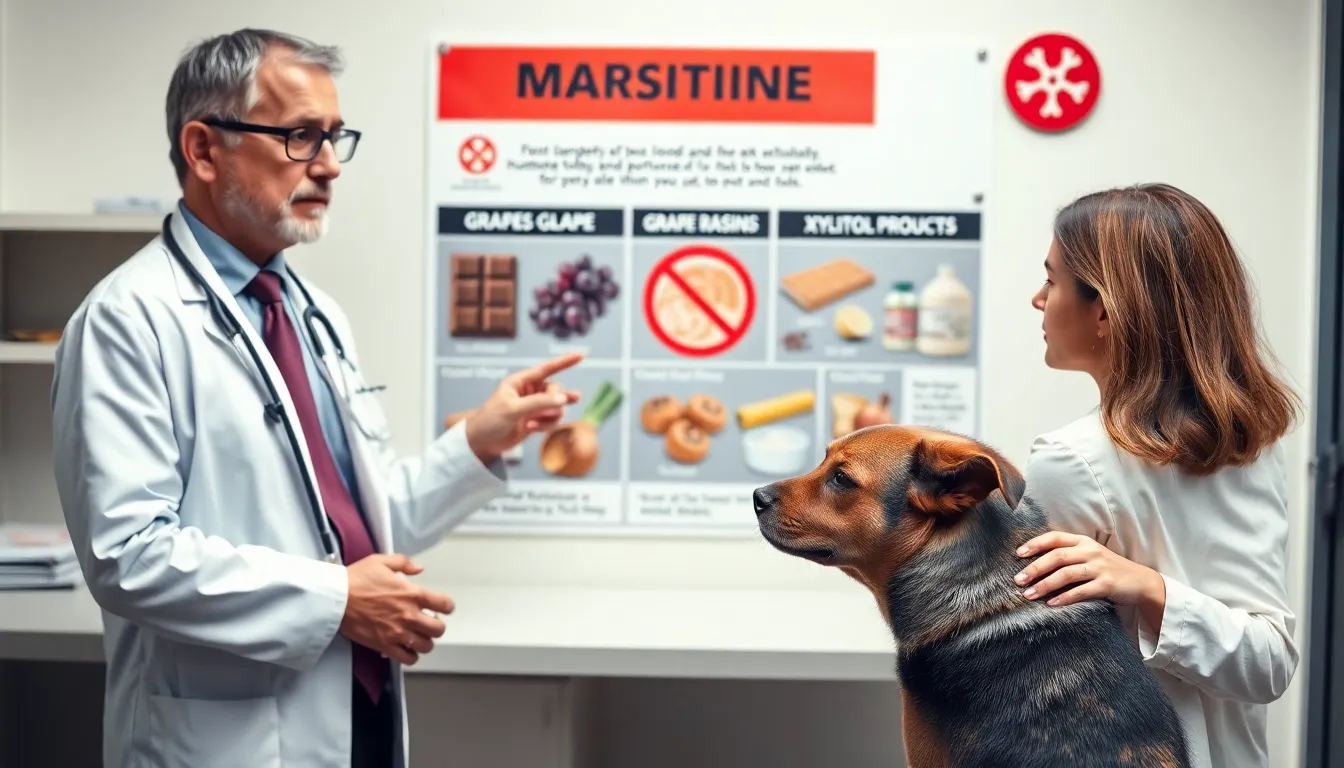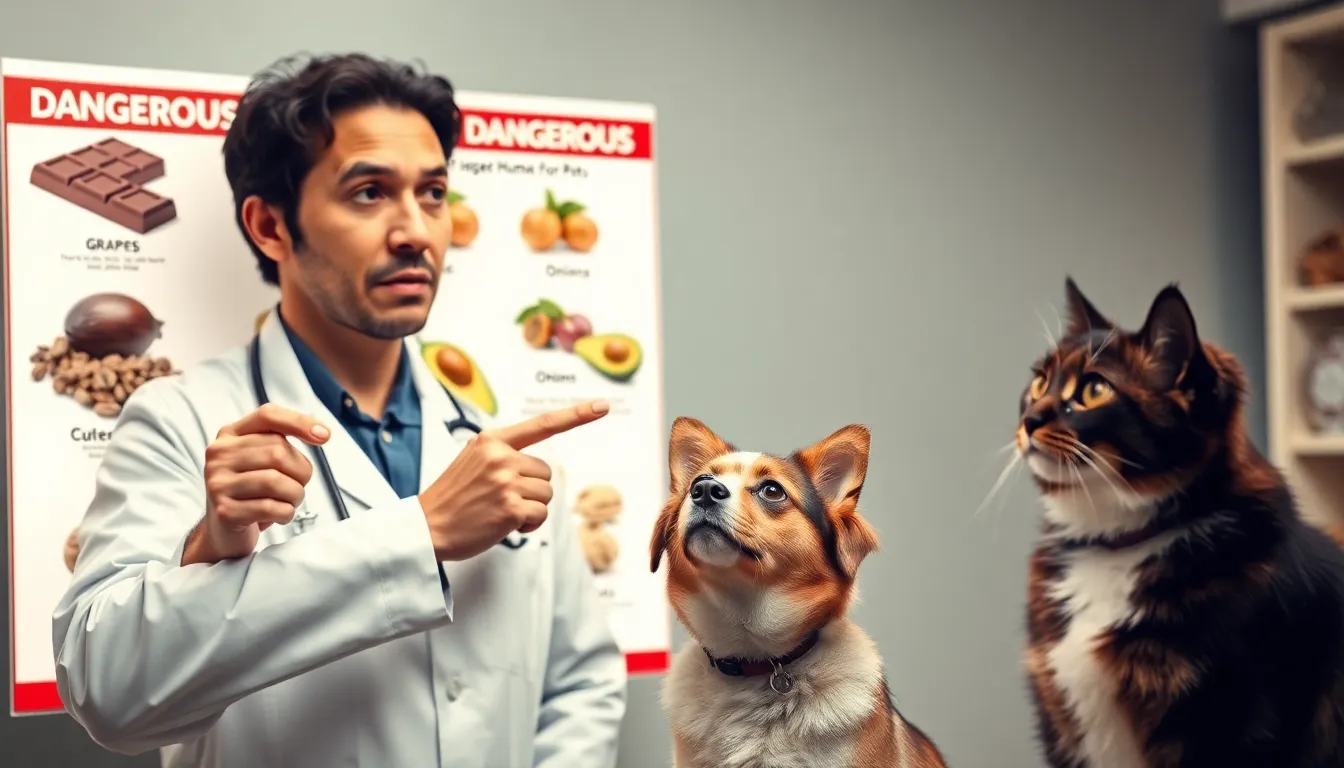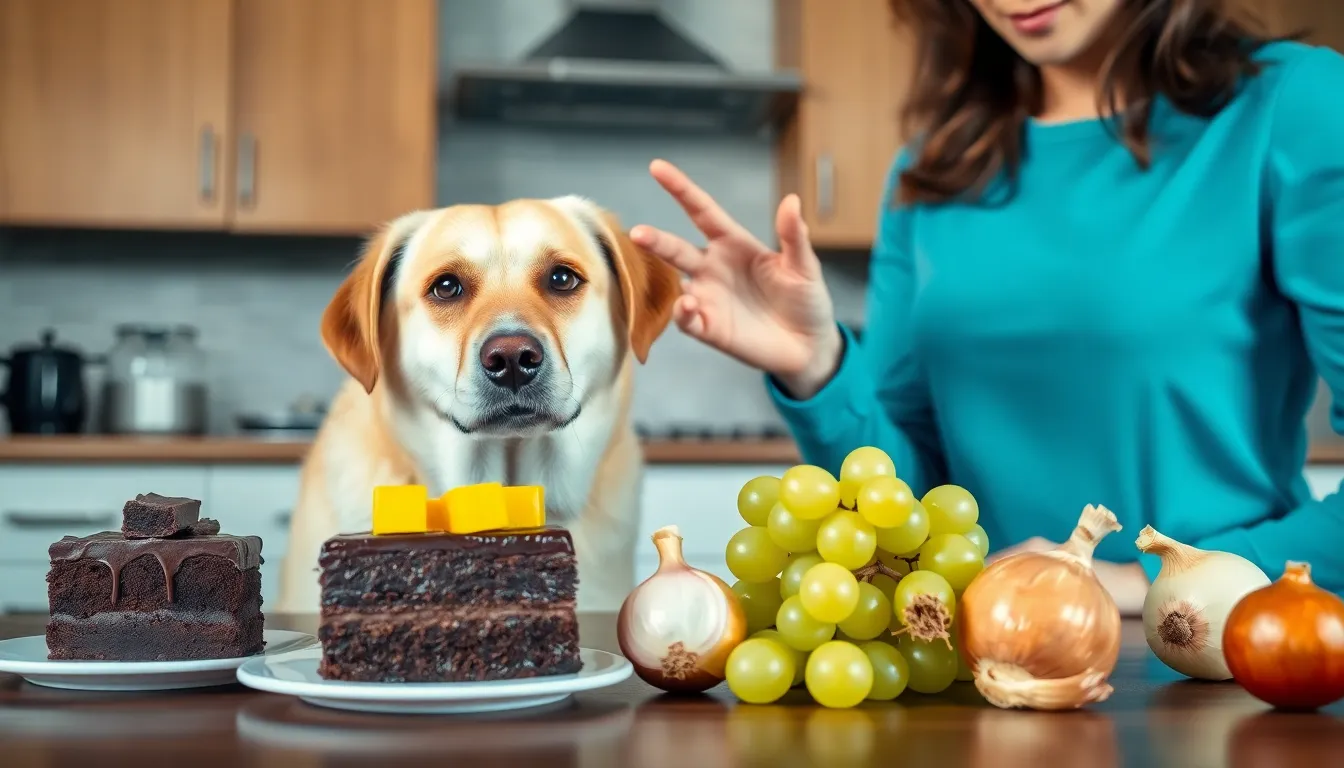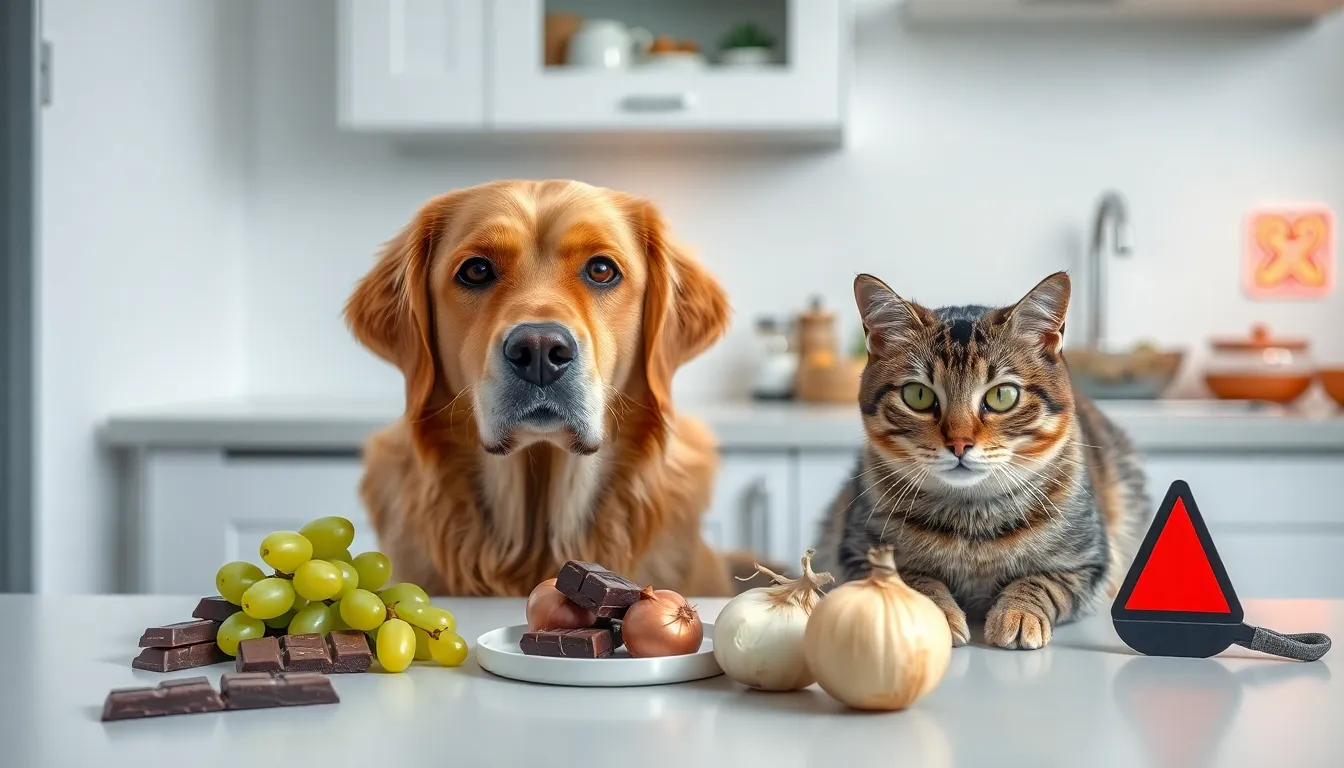People Foods to Avoid Feeding Your Pets presents a serious health concern, as many common human foods contain compounds that pets cannot metabolize properly, potentially leading to severe illness or death. Understanding these dangers is critical for pet owners, especially since food-related emergencies account for 15-25% of acute veterinary visits annually according to recent veterinary research.
Key Implications:
- Pet owners must recognize that chocolate, xylitol (in sugar-free products), grapes, raisins, onions, and garlic pose significant health risks to pets, with effects ranging from digestive issues to kidney failure and cardiac complications.
- Symptoms of food poisoning in pets require immediate attention, including vomiting, diarrhea, lethargy, seizures, and abnormal breathing or heart rate.
- Prevention remains the most effective approach, requiring secure storage of harmful foods, maintenance of emergency veterinary contact information, and establishing separate feeding routines for pets.

People Foods to Avoid Feeding Your Pets
Many pet owners make the dangerous mistake of sharing human foods with their furry companions. Certain foods safe for humans can cause serious health problems for pets, ranging from digestive issues to organ failure and even death. According to veterinary research, food-related emergencies account for approximately 15-25% of acute veterinary visits annually (Veterinary Medical Association, 2023).
Common Toxic Foods for Pets
Chocolate contains theobromine and caffeine, compounds that pets cannot metabolize efficiently. Dark chocolate and baking chocolate pose the highest risks, potentially causing vomiting, diarrhea, seizures, and heart problems. Xylitol, an artificial sweetener found in sugar-free gum, candy, and some peanut butters, can trigger rapid insulin release in dogs, leading to life-threatening hypoglycemia within minutes to hours after consumption.
Grapes and raisins deserve special caution. Even small amounts can cause kidney failure in some dogs, with no clear understanding of why certain pets are more susceptible than others. Onions and garlic, whether raw, cooked, or powdered, damage red blood cells and can cause anemia, particularly in cats who are more sensitive than dogs.
Signs of Food Poisoning to Watch For
Pet owners should monitor for these symptoms after accidental ingestion:
- Vomiting or diarrhea
- Lethargy or weakness
- Excessive drooling or panting
- Tremors or seizures
- Rapid breathing or heart rate
Immediate veterinary attention improves outcomes substantially when toxic foods are consumed. Keep emergency vet contact information accessible, and consider pet health monitoring devices for senior animals who may have more severe reactions to toxic foods. Prevention remains the most effective approach—store potentially harmful foods securely away from curious pets.

Dangerous Human Foods That Can Harm Your Pets
Many common foods we enjoy daily pose serious health risks to our furry companions. Chocolate contains theobromine and caffeine, both toxic substances that pets cannot metabolize effectively. Dark chocolate and baking chocolate contain higher concentrations, making them particularly dangerous. Even small amounts can cause vomiting, diarrhea, rapid breathing, and in severe cases, seizures or death.
Xylitol, a sugar substitute found in sugar-free gum, candy, and some peanut butter brands, creates a rapid insulin release in dogs. This sudden insulin spike can lead to hypoglycemia within minutes to hours of consumption. The consequences include vomiting, loss of coordination, and potential liver failure.
Fruits and Vegetables to Avoid
Grapes and raisins deserve special caution as they can cause kidney failure in dogs. Research hasn’t identified the exact toxic substance, but the danger exists regardless of the variety or amount consumed. Onions and garlic contain compounds that damage red blood cells in both cats and dogs, with cats being particularly sensitive.
Avocados contain persin, which causes vomiting and diarrhea in most pets. The large pit also presents a choking hazard and potential intestinal blockage if swallowed. While selecting pet products for seniors, choose those specifically formulated for aging pets’ nutritional needs.
Common Household Items That Pose Risks
- Alcohol can cause dangerous drops in blood sugar, blood pressure, and body temperature
- Caffeine affects the heart, central nervous system, and can be fatal
- Raw bread dough expands in the stomach and produces toxic ethanol
- Macadamia nuts cause weakness, hyperthermia, and vomiting in dogs
- Cooked bones splinter easily and may cause intestinal punctures
The severity of reactions typically depends on the size of your pet, the quantity consumed, and individual sensitivities. When in doubt about potential food hazards, consult with your veterinarian immediately.

Dangerous Foods For Your Pet: Human Foods That Can Be Toxic
Pet owners often share food with their furry companions as a gesture of love, but certain human foods can pose serious health risks to animals. Common everyday foods like chocolate, grapes, and onions contain compounds that pets cannot metabolize properly, potentially leading to severe illness or even death.
Most Common Toxic Foods for Pets
Chocolate tops the list of dangerous foods, containing theobromine which affects pets’ cardiovascular and nervous systems. According to veterinary data, even small amounts can cause vomiting, diarrhea, and in severe cases, seizures or heart failure. Xylitol, an artificial sweetener found in sugar-free products, creates a rapid insulin release in dogs, causing potentially fatal hypoglycemia within 30-60 minutes of consumption.
Signs Your Pet Has Consumed Toxic Food
- Sudden vomiting or diarrhea
- Unusual lethargy or weakness
- Elevated heart rate or breathing
- Tremors or seizures
- Loss of coordination
- Excessive drooling or panting
Immediate veterinary attention becomes crucial if you suspect your pet has ingested harmful foods. The treatment window for many toxicities is narrow, typically 1-2 hours for optimal intervention. Pet owners should maintain an emergency contact list with their regular vet and a 24-hour emergency animal hospital number.
Prevention remains the best approach by keeping dangerous foods securely stored away from curious pets. Creating separate pet-friendly food areas in your kitchen can help establish boundaries and reduce accidental exposure to harmful human foods.

Human Foods Toxic to Dogs and Cats
Many pet owners unknowingly put their furry companions at risk by sharing their meals. The digestive systems of cats and dogs differ significantly from humans, making certain foods potentially life-threatening to them. Common household ingredients like chocolate contain theobromine, which pets metabolize much slower than humans do, leading to toxicity even in small amounts.
Most Dangerous Foods for Pets
Grapes and raisins pose serious kidney damage risks in dogs, with some canines experiencing kidney failure after consuming just a few pieces. Onions and garlic contain thiosulfate compounds that damage red blood cells in both cats and dogs, with cats being particularly vulnerable. Xylitol, found in sugar-free products, triggers excessive insulin release in dogs, potentially causing hypoglycemia within 30-60 minutes of consumption.
Warning Signs of Food Poisoning
- Vomiting or diarrhea within 12 hours of consumption
- Lethargy or unusual weakness
- Loss of coordination or seizures
- Excessive drooling or panting
- Abdominal pain or swelling
According to veterinary emergency data, chocolate toxicity cases typically spike around holidays (Source, 2023). If you suspect your pet has consumed toxic food, contact a veterinarian immediately. Prevention remains the most effective strategy—maintain separate feeding routines and store human foods securely away from curious pets.
Source
ASPCA Poison Control Phone Number
ASPCA support services
